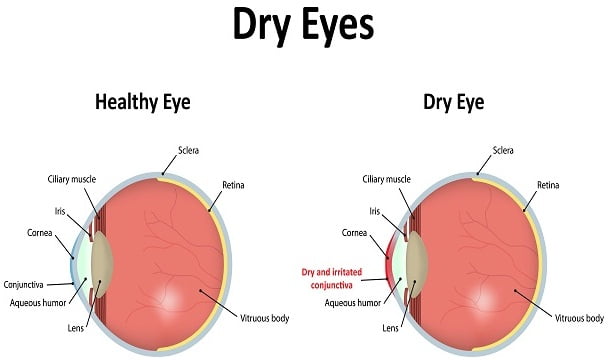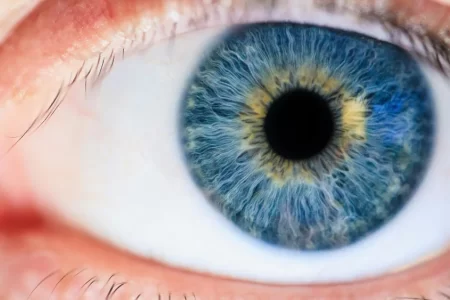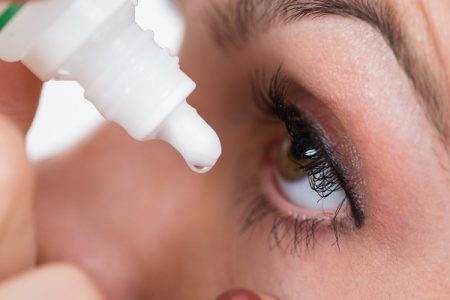What is Dry Eye (Dry Eye Syndrome)?
- Updated on: Jul 9, 2024
- 3 min Read
- Published on Apr 19, 2021


Overview of Dry Eyes
Dry eye syndrome (also called simply dry eye disease), is a common condition that occurs when your eyes don’t make enough tears, or when the tears produced are not of good quality, or when the tears evaporate too quickly.
Your tears aren’t able to provide enough lubrication needed. This causes the eyes drying out and sometimes they may become red and swollen causing irritation and itching.
Dry eye syndrome is also sometimes called keratoconjunctivitis sicca, or simply ‘dry eyes’.
Often, you may experience dry eyes in certain situations, such as when you travel in an airplane, or sitting in an air-conditioned room, or while riding a bike or after looking at a video game or TV or a computer screen for a few hours.
Treatments for dry eyes are available that make you more comfortable. These include lifestyle changes and artificial lubricants that can be used as eye drops. You will likely need to consider these options lifetime in order to maintain healthy and comfortable eyes. Read about treatment of dry eyes.
People with dry eyes either do not produce enough tears or the tears are of a poor quality.
Inadequate amount of tears
There are several glands in and around our eyelids that produce tears. Tears are important to maintain health of the eyes. Over time, as we grow old, tear production tends to decrease. The process of tears production also decreases with various medical conditions or as a side effect of certain medicines. Certain environmental conditions, such as wind and dry climates, can also cause the tears to evaporate fast. When the tear production decreases or the tears evaporate too quickly from your eyes, you may develop symptoms of dry eye.
Poor quality of tears
Your tears are made up of three layers:
- Oil
- Water, and
- Mucus.
These components protect your eye and nourish them to maintain a good eye health. The oil layer helps prevent evaporation of the water layer. The mucus layer helps in even distribution of the tears over the surface of the eye. If your tears evaporate too quickly or do not spread evenly over the surface due to problems with any of the three layers, you can have dry eyes.
Alternative medical terms used to describe dry eyes
- Keratitis sicca: It is generally used to describe dryness and inflammation of the cornea
- Keratoconjunctivitis sicca: It is used to describe dry eye that affects both the cornea and the conjunctiva of your eyes
- Dysfunctional tear syndrome: The term is used to describe poor quality of tears. Quality of tears is as important as the amount of tear production.
Prevalence of dry eye
Dry eyes are extremely common. It is a major reason for visits to ophthalmologists. Its prevalence increases with age. The disease affects a significant percentage of the population, especially those older than 50 years of age.
A recent survey indicated that about 50% of Americans people aged 18 and older develop dry eye symptoms.
Middle-aged and older adults are the most commonly affected people because of the extensive use of contact lens, drug effects, associated diseases and medical conditions with them, and refractive or various other surgeries in these groups. Read about causes of dry eyes.
It is estimated that more than 25 million Americans suffer from dry eyes, and the number is expected to increase to about 30 million in the next decade. This data however is based on self reports.
The exact prevalence of dry eye disease is unknown due to the difficulty in defining the disease and absence of a single diagnostic test to confirm its occurrence.











